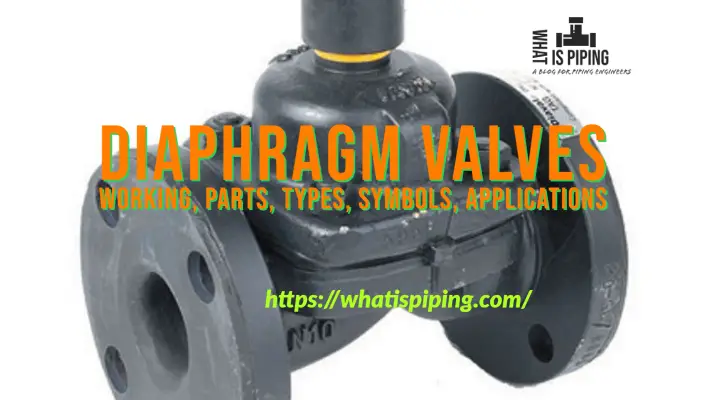Glass piping systems are a special type of piping system mainly used for food processing, laboratory service, and some other industrial applications. Glass piping is specifically preferred because of its cleanliness, transparency, durability, and good chemical resistance. However, glass pipes being of special nature, require special consideration of supports and attachments. In this article, we will briefly discuss some salient points of glass piping in general.
Advantages of Glass Piping
Glass pipes find application for some specific piping services in the chemical and pharmaceutical industries. The primary application of glass piping systems is for gravity drainage of various corrosive
liquids (Acid-waste drainage).
The main benefits that glass piping provides are:
- Smooth, pore-free surface
- Very high corrosion resistance for a range of aggressive chemicals
- Their transparent nature is useful in various applications.
- No possibility of product contamination.
- Glass piping does not affect the taste, odor, and color
- Glass pipes are Inert
- Long service life
- Low maintenance cost
Glass-lined pipes are increasingly used in various industries as glass-lined piping components offer similar advantages as those offered by solid glass piping. Additionally, the secondary containment of glass-lined pipes increases resistance to shock loads.
However, glass-lined pipes usually suffer from a crazing effect when subjected to repeated thermal stresses. This same problem does not occur with glass piping systems.
Pipes, fittings, and other hardware are available for glass pipes. In general, low-expansion borosilicate glass having a low alkali content is widely used for producing glass piping systems. They are joined by compression couplings.
Supporting Glass Pipes
The below-mentioned guidelines are considered for supporting glass pipes.
- Glass piping systems can be supported using standard pipe support components. However, padding or cushion must be used to avoid scratching the pipe surface.
- Point loading over the glass piping surface must be avoided. The support should be installed in such a way that it fit loosely around the pipe, but distribute the load over the largest possible area.
- Rigid anchor points on glass piping systems are usually reduced to the minimum possible.
- There is no standard pipe support span, so manufacturer-provided guidelines must be followed for supporting glass pipes. As a general rule, glass pipes usually require two supports per 10-ft (3.05-m) section. One extra support is added when there are three or more couplings in a 10-ft (3.05-m) section.
- For maximum protection and accessibility, supports are placed about 1 ft (0.3 m) from each joint or coupling.
Glass pipe supports and layouts are usually designed based on the general fundamentals used for other piping materials. However, extreme care needs to be exercised to reduce strain and scratching of the glass. The design of support systems for glass pipes is normally performed in consultation with the pipe manufacturer and reputable support manufacturers.
For glass-lined pipes, the glass lining is extended from the pipe bore to cover the gasket seating areas of flanges. Nonmetallic sheet gaskets suitable for the service are used to minimize compression seating forces exerted on the glass-lined flange face.
Features of Glass Piping
The usually available sizes for glass piping systems are 1, 1 1/2, 3, 4, and 6 inches. The maximum operating temperature is 400 F with a pressure ranging from 0-75 PSIA (1 in. thru 3 in.), 0-50 PSIA (4 in.), and 0-35 PSIA (6 in.). Flange assemblies are used to connect with pipe fittings and equipment.
The borosilicate glass to manufacture the glass pipe components conforms to the ASTM E438 standard. The approximate chemical compositions consist of the following elements:
- SiO2 81% (Wt %)
- B2O3 13% (Wt %)
- Na2O 4% (Wt %)
- Al2O3 2% (Wt %)
Borosilicate glass pipes are suitable for almost all substances except hydrofluoric acid, phosphoric acid, and hot strong caustic solutions. Phosphoric acid and caustic solutions can be used at lower temperatures, however, hydrofluoric acid service is suitable for Borosilicate glass piping.
Some of the physical properties of borosilicate glass pipes are:
- Coefficient of mean linear expansion Between 20°C and 300° : (3.3 ±0.1) x 10-6 K-1
- Mean thermal conductivity Between 20°C and 200°C: 1.3 W/mK
- Mean specific heat capacity Between 20°C and 200°: 0.98 kJ/kg K
- Density at 20°C: 2.23 g/cm3
The thermal expansion of glass pipe is approximately 0.022 inches per 100 feet of pipe and 100°F temperature change.









Hello Anup, I am currently doing a project on Glass pipping for plumbing purposes. There doesn’t seem to be a lot of history info anywhere and was curious if you knew any history of it?
regards
Jamie Millar